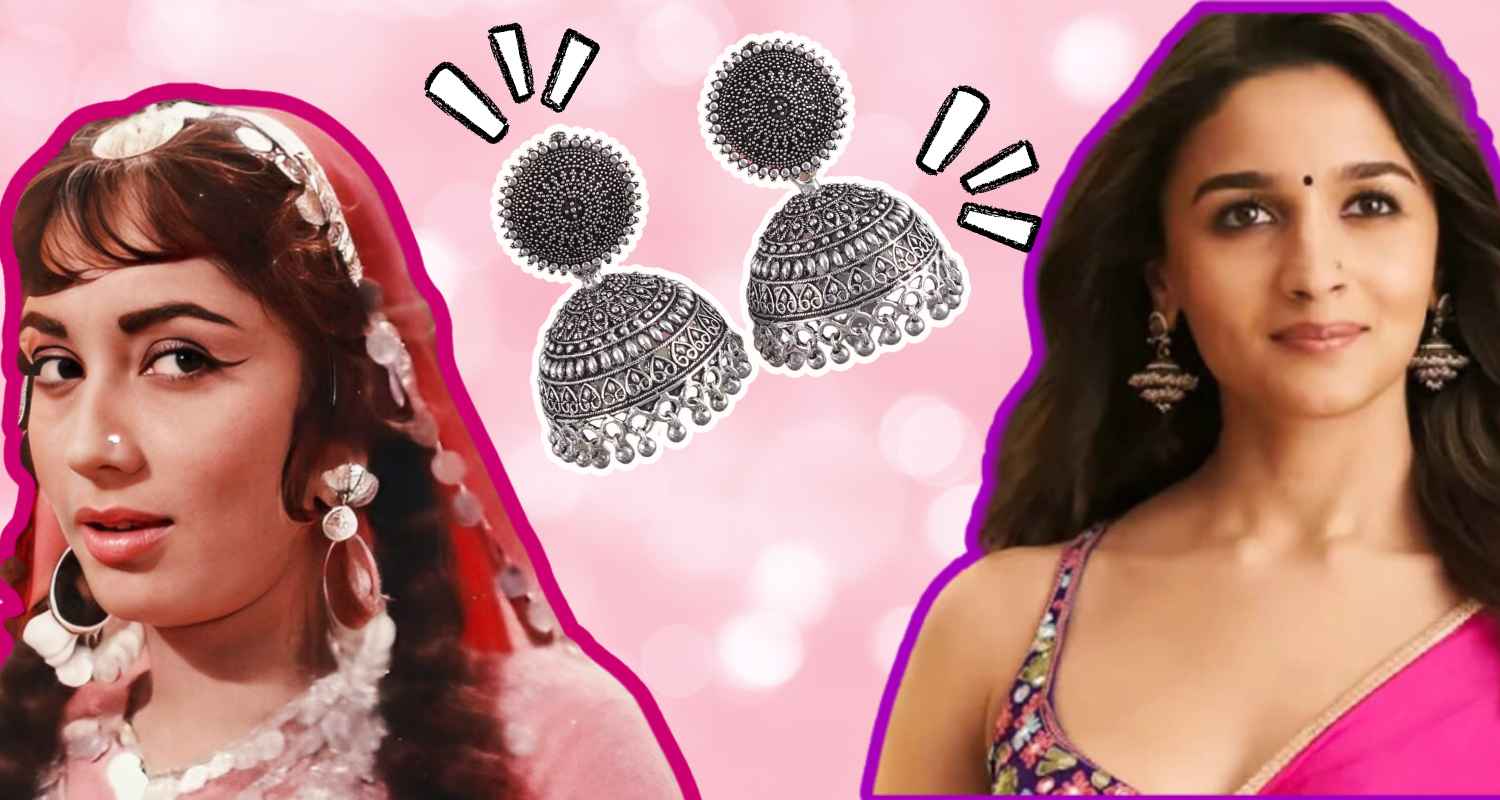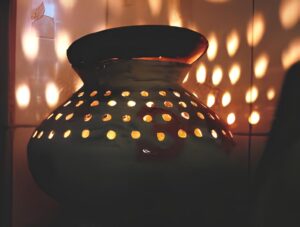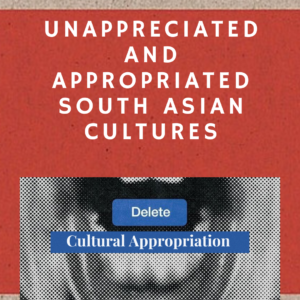–An Article by Ishita Nathwani
The new song “What Jhumkha?” offers a contemporary reinterpretation of the classic Bollywood song “Jhumka Gira Re” from the 1966 movie “Mera Saaya.” While the original song celebrated the beauty and allure of the jhumka, traditional Indian earrings, the new version adds a modern twist, potentially questioning the significance and symbolism of this iconic piece of jewelry in today’s context.
 The jhumka holds deep historical roots in India, symbolizing femininity, grace, and cultural heritage. These earrings have adorned women for centuries and are often associated with traditional Indian attire. Furthermore, they have been depicted in various forms in ancient sculptures and paintings, underscoring their enduring cultural significance.
The jhumka holds deep historical roots in India, symbolizing femininity, grace, and cultural heritage. These earrings have adorned women for centuries and are often associated with traditional Indian attire. Furthermore, they have been depicted in various forms in ancient sculptures and paintings, underscoring their enduring cultural significance.
“What Jhumkha?” might explore how this age-old ornament resonates in contemporary society, shedding light on the evolving role of tradition and symbolism in modern India. It could prompt viewers to reflect on the changing perceptions and meanings associated with this traditional accessory, ultimately inviting a dialogue about cultural identity and values in today’s world.
Let us see a bit of the history of this fine piece of jewelry…

Indian jewelry predates Indian civilization itself. Beaded jewelry has been discovered in the remains of the Indus Valley civilization dating back 5000 years. The sculptures at Bharhut, Sanchi, and Amaravati, as well as the paintings at Ajanta, depict a diverse range of jewels worn by men and women, kings and commoners. Temples in South India, Bengal, Orissa, and Central India offer a real feast of jeweler’s craft.
Originating in ancient Indian civilizations, they evolved from simple earrings to intricate, culturally significant adornments.
Jhumka earrings may be traced back to ancient India and Persia when 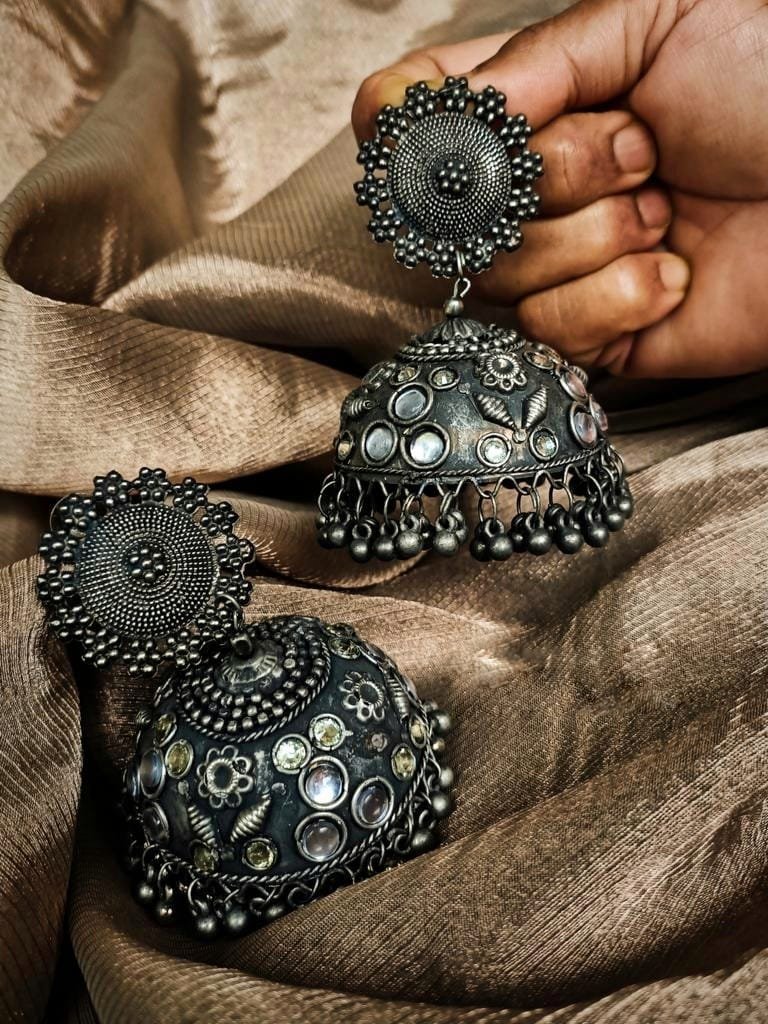 royals initially wore them as a sign of their position and authority. They were often crafted of gold and studded with costly jewels, signifying the ruling class’s riches and luxury. Jhumkas are associated with tradition, spirituality, and auspiciousness in different regions of India. Over time, their designs became more intricate, incorporating precious and semi-precious materials like gold, silver, stones, enamel work, and filigree. These earrings symbolize femininity, enhancing a woman’s beauty with their delicate, swaying design. Despite changing fashion trends, jhumkas have maintained their popularity and cultural significance, transcending borders to become beloved accessories globally.
royals initially wore them as a sign of their position and authority. They were often crafted of gold and studded with costly jewels, signifying the ruling class’s riches and luxury. Jhumkas are associated with tradition, spirituality, and auspiciousness in different regions of India. Over time, their designs became more intricate, incorporating precious and semi-precious materials like gold, silver, stones, enamel work, and filigree. These earrings symbolize femininity, enhancing a woman’s beauty with their delicate, swaying design. Despite changing fashion trends, jhumkas have maintained their popularity and cultural significance, transcending borders to become beloved accessories globally.
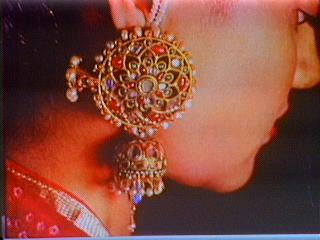
For example, the Karanphool, with the floral design in the center, has been the most popular ear gem in the north. A Jhumka in the form of a bell has also been worn independently. However, it was not until the Moghul time that the Karanphool Jhumka evolved as a single gem for the ear, with each area adding its own distinctive adornment to the fundamental pattern. Vintage Karanphool Jhumka from Rajasthan (Karanphool means ear flower) has uncut diamonds, pearls, and cabochon rubies placed in it. To support the weight of the diamond, two strands of pearls are wrapped around the ear. The protrusion at the back is also for connecting it to the hair to reduce the weight on the ear. The Karanphool, with the floral design in the center, has been the most popular ear gem in the north. A Jhumka in the form of a bell has also been worn independently. However, it was not until the Moghul time that the Karanphool Jhumka evolved as a single gem for the ear, with each area adding its own distinctive adornment to the fundamental pattern.
 Jhumkas are a popular choice among Indian women, with gold being the most sought-after material due to its lustrous shine and timeless elegance. Gold jhumkas symbolize wealth, prosperity, and good luck, making them perfect for special occasions. Silver jhumkas are affordable and elegant, often adorned with colorful gemstones or beads. Brass jhumkas are affordable, durable, and elegant, often crafted with intricate designs. Regardless of the material, jhumka earrings are a beautiful and versatile accessory that elevates any outfit to new heights of elegance and sophistication. They embody the beauty and grace of Indian culture and are a symphony of beauty and grace that resonates with both wearers and onlookers. From the bustling streets of Delhi’s bazaars to the tranquil shores of Kerala, jhumkas have graced the ears of women across India and beyond, leaving an indelible mark on fashion and heritage.
Jhumkas are a popular choice among Indian women, with gold being the most sought-after material due to its lustrous shine and timeless elegance. Gold jhumkas symbolize wealth, prosperity, and good luck, making them perfect for special occasions. Silver jhumkas are affordable and elegant, often adorned with colorful gemstones or beads. Brass jhumkas are affordable, durable, and elegant, often crafted with intricate designs. Regardless of the material, jhumka earrings are a beautiful and versatile accessory that elevates any outfit to new heights of elegance and sophistication. They embody the beauty and grace of Indian culture and are a symphony of beauty and grace that resonates with both wearers and onlookers. From the bustling streets of Delhi’s bazaars to the tranquil shores of Kerala, jhumkas have graced the ears of women across India and beyond, leaving an indelible mark on fashion and heritage.
To make room for more decorations, the ear was pierced four times in the past: the lobe, the inner ear, the outside section of the center of the ear, and the top of the ear.
Jhumkas are intricate earrings in Indian and South Asian fashion, enhancing outfits and adding a touch of traditional beauty. They are favored for special occasions, such as weddings, festivals, and religious ceremonies. Jhumkas can be small or large and can be customized to suit various occasions. They are a girl’s best friend in jewelry, expressing individuality and grace. Choosing between simple bell-shaped, heavy stone-infused, or diamond jhumkas depends on personal style preferences and the occasion. Having a variety allows for effortless adaptation to different moods and events.
So, whether you’re celebrating tradition, expressing your style, or simply looking for a little pick-me-up, jhumkas are here to charm your world!

